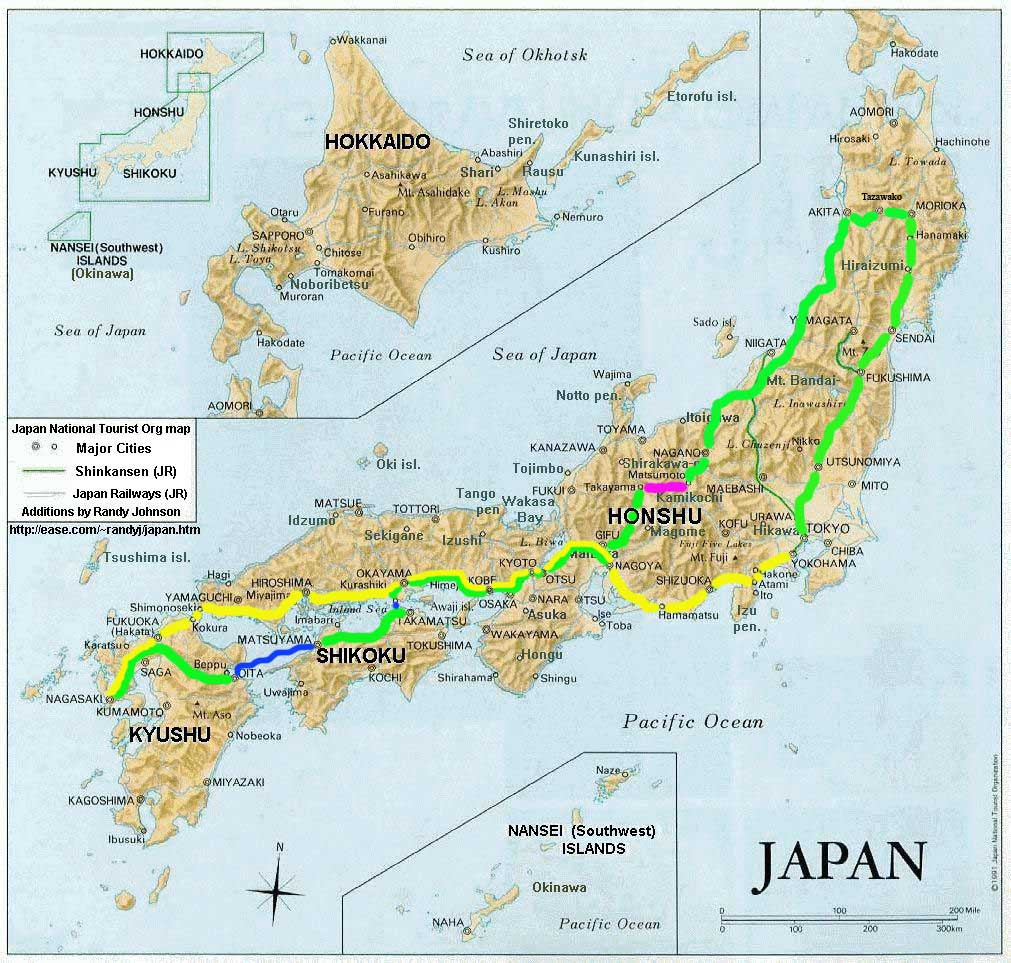

Japan Overview
Daily Journal
Week 1
Week 2
Week 3
Week 4
Japanese Vocabulary


Overview
When I was living on Felspar street in San Diego, two of my best friends at the time were Steve Holm (an RN) and John Travers (an MD). Both of them had been stationed for three years in Yokosuka, Japan with the Navy earlier in their careers. They still had a few friends in Japan and they wanted to go back and visit. I jumped at the opportunity, and the three of us decided to go, John for two weeks, and Steve and I for a month. The plan was to travel around the country for two weeks by train on a rail pass, then spend two more weeks in Nagasaki visiting their good friend, Yas. That way we could get a little more involved in the local culture. It didn't hurt that Yas owned a Bar/Restaraunt, and we drew a lot of business in for him while we were there. What a plan! What a great trip it turned out to be!
My journaling skills were not very good back then, so the following Journal is a bit lean on commentary, but Iíll add what I can remember (now 22 years later).
The most striking thing to me was the nearly seamless way in which the Japanese combine two diametrically opposed cultures into one: Feudal Japanese with High-Tech Western Culture. Both are clearly visible throughout the country.
The people were all extremely friendly and we were regularly pulled into bars, or asked to join them at their tables for drinks. They were all very interested in talking to us. I was a little surprised at how few Gaijin (foreigners) tourists there were (outside the biggest Cities, of course), but it did make us more popular. I still have visions of walking down a busy street, looking down on a sea of black hair while I towered above everyone.
For the most part when outside the big cities, we stayed in very traditional Japanese-style hotels called Minshukus. These provided rooms with Tatami (woven Bamboo) floors (NO shoes!), thin mats to sleep on the floor, Paper Walls, and a common bathroom. Breakfast was usually included, and delicious (although I had absolutely no idea what I was eating half the time!). We bathed regularly, but in the local Ofurro (public bath-house) along with most residents. Even private houses often did not have their own bathing facilities.
We also ate predominantly Japanese food, and for the most part, were always very pleased with what we got, even though we rarely knew what it was. Fortunately, instead of menus, all the restaraunts provide plastic models of the food in a case out front, so we could simply point out what we wanted.
One of the interesting things we did as we created our journals was to take advantage of the elaborate stamps the Japanese provided at every train station, tourist attraction, and hotel. Here are a few representative examples:
The Railway timetable was our most well-used piece of equipment by far! We spent hours pouring over its contents and planning where to go next. I'm not sure we would have survived without it!
Contact me at: rf6gunz@yahoo.com
Copyright © 2008, Rick Fletcher


